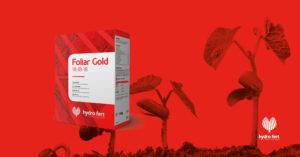What is a fertilizer?
A fertilizer is every substance of natural origin or deriving from industrial, mineral or organic synthesis, which – thanks to its peculiar chemical, physical and biological features – helps improve the fertility of soil or feed the plant species cultivated.
Why is it used?
It is used to:
• Supply to crops one or more elements necessary for their development (fertilization)
• Improve physical-mechanical characteristics (soil conditioning)
• Correct any abnormal reactions (correction)
• Increase microbial activity or plant metabolism (biostimulation)
What types of fertilizers are there?
Fertilizers can be classified according to plants need of one or more chemical elements of fertility (main and secondary elements, micronutrients) as well as according to their nature (mineral and organic fertilizers).
The main fertilizers are those based on nitrogen, phosphorus and potassium, the secondary ones contain calcium, magnesium, sulphur and sodium, while micronutrients are based on boron, manganese, zinc, copper, molybdenum, cobalt and iron.
Mineral fertilizers are natural or synthetic fertilizers containing enough quantity of chemical to be declared on labels. They are further classified as:
– Simple (nitrogenous, phosphatic, potassic ones);
– Compound (nitrogen-phosphatic, nitrogen-potassic, phospho-potassic, nitrogen-phospho-potassic) containing one or more main chemical elements of fertility (N, P, K), in one or more forms or solubility. They can also contain secondary elements and/or micronutrients;
– Based on secondary elements (Ca, Mg, S, Na), they can also contain trace elements;
– Based on micronutrients (or trace elements) (B, Mn, Zn, Cu, Mo, Co, Fe), they can also contain secondary elements;
– Organic fertilizers, compounds from carbon of animal or plant origin, chemically linked under organic form to the main elements of fertility. They are therefore divided into: nitrogenous and nitrogen-phosphatic;
– Organo-mineral fertilizers, obtained by reaction or mixture of one or more organic fertilizers with one or more simple or compound mineral fertilizers. They are therefore classified as: nitrogenous, nitrogen-potassic, phospho-potassic and nitrogen-phospho-potassic.
A further classification is based on their supply method: whether applied to soils (root fertilizers) or to the external part of plants (foliar fertilizers).
Last, the market distinguishes fertilizers in 3 big macro-categories:
Commodities: which mainly include mineral fertilizers and represent the most consistent part of manufacturing sector. These are synthesized products from methane (production of ammonia, urea, nitric acid and ammonium nitrate), sulphuric acid and phosphatic rocks and potassium salts.
Organic products: which include organic fertilizers, soil conditioners and organo-mineral fertilizers.
Specialty fertilizers: those that act on the releasing features of mineral elements, on the formulations solubility as well as on biostimulant properties of some organic compounds.
Such products act very differently from one another in their proper categories, each one aiming to obtain some given performances. The applied technologies, here again of chemical and biochemical/enzymatic kind, are peculiar for this sector, which requires a high degree of technology and specialization.





